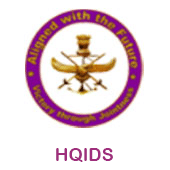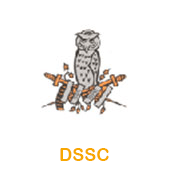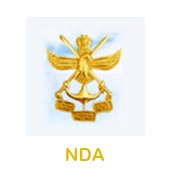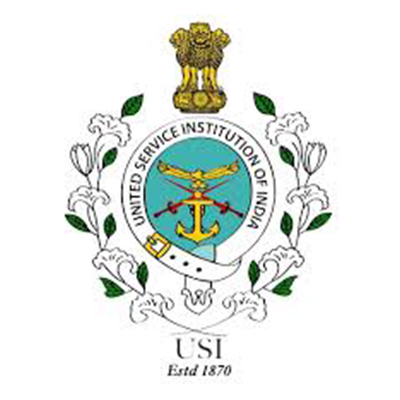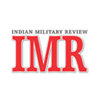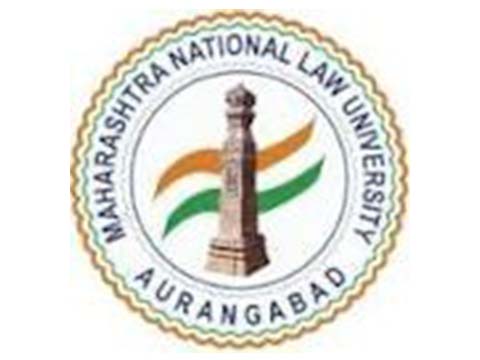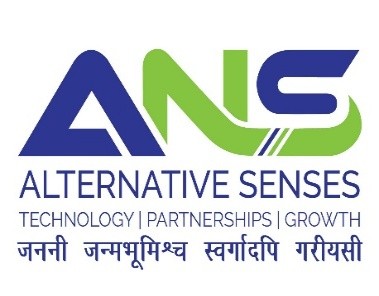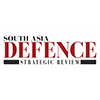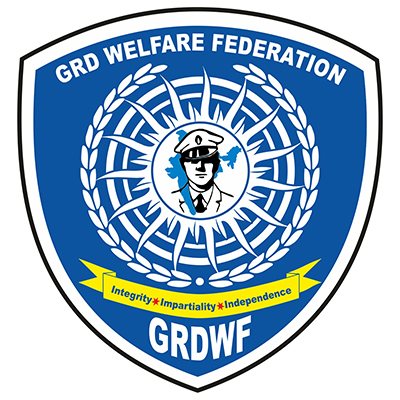Essence & Control of Mil Conflict
BY | Col Vivek Puri & Capt Nishant Khanna

1. While the nature of war is understood to be permanent, its character is ever changing. In the contemporary context, nation-states are consistently challenged by this very changing character of war. A precise understanding of war, warfare and military conflict is essential for the policymakers, decision-makers, and the executioners to prepare their respective entities to successfully meet the challenges associated with military competition. Once this essence of military conflict is understood, the next step is the correct approach towards its control.
2. The aim of this paper is to offer an approach towards understanding the nature and character of military conflict and issues related with how military conflict is controlled.
3. Theory in Use. This paper developed its subject matter with the application of the Grounded Theory approach. For the purpose of ‘understanding military conflict’, this paper relied on Clausewitzian Theory on War.
4. Applying ‘Qualitative Data Analysis’ approach, publications available in open source were analysed to identify the relevant theoretical constructs related to the subject at hand and correlate these with the prevalent sentiment on the subject in the environment. This was followed by critical exercise applying Case Study Analysis of certain real military conflict situations.
5. In his seminal treatise ‘VomKriege’ , Prussian General Carl von Clausewitz mentions, “War is an act of force to compel our enemy to do our will”. The author thereafter goes on to define the essential facets of war which include, though not limited to (Clausewitz 1976, 75-89):-
6. Thus, the enduring Nature of War can be summarized as violent, interactive and fundamentally political. Clausewitz further defines the prominent tendencies of war as a ‘paradoxical trinity’ comprising primordial violence, hatred and enmity; play of chance and probability and; its subordination as an instrument of rational policy. When we study this trinity under the social construct it can be likened to the People, the Army and the Government. War therefore has its origins linked to the passion of the people; courage and probability of chance of the military and rational thinking and political aims of the government. No wonder according to Clausewitz “War is a mere continuation of politics by other means” (Clausewitz 1976, 87).
7. Taking a cue from Arthur F. Lykke Jr.’s strategic framework of ends, ways, and means; it may be concluded that if Victory is the End State; Force the Means; then Ways of employment of force is Character of War, which unlike the Nature of War, is continuously evolving as it is influenced by evolution of mankind, society, politics, economics and technology; as well as will of leadership, military doctrine and organization. Recent trends indicate a shift in Character of War from military means to use of unrestricted means which include non-military/ covert/ non-contact and non-linear means to subjugate the enemy. In lieu of targeting enemy forces, adversaries target enemy’s perception and society, and disrupting the support system on which the enemy military depends. We shall discuss this evolving character of war later in this paper.
8. As per Clausewitz, if political purpose dictates a military action, then theoretically the objectives of war will be (Clausewitz 1976, 90):-

9. This theoretical construct may seem detached with respect to reality as there are enough and more examples wherein treaties were concluded before one of the antagonists could be called powerless, or even before the balance of power had been seriously altered. This disconnect has over the centuries been one of the major critiques of the Clausewitzian theory on war . However, we have seen from historical evidence that ‘war’ assumes an amorphous form and branches out into various domains making it difficult for theorists to define a shape whose limits can be defined. The complexities associated with defining rules and structure of such an unstructured construct are many, and therefore, while Clausewitz delved into the intangible domain of ‘will of the enemy’, ‘hostile feelings’, ‘intellect and temperament of the Commander’, et cetera; other theorists of that time restricted themselves to quantification of ‘physical matter’ such as the size of adversary’s force. This was truly out of the ordinary.
10. The view of the critics and Clausewitz’s own admission therefore does put a question to the relevance of ‘Theory of War’. We however need to be cognizant of the fact that theory in any field of study provides the necessary framework for understanding a phenomenon, which in the extant case is ‘War’, and also comprehend the likely limitation of the theoretical construct with respect to reality. Thus, when Clausewitz states that “actual war is often far removed from the pure concept postulated by theory” what he may actually mean is that given the nature of the subject, we must remind ourselves that it is simply not possible to construct a model for the art of war or an algebraic formula for use on the battlefield that can serve as a scaffolding on which the commander can rely for support at any time. He further mentions that these principles and rules are intended to provide a thinking man with a frame of reference for the movements he has been trained to carry out, rather than to serve as a guide which at the moment of action lays down the precise path, he must take (Clausewitz 1976, 133-142).
11. Theoretically, if ‘War’ is a ‘clash between major political interests, which is resolved by violent interaction and bloodshed’ with the desired end state of ‘winning’ (Clausewitz 1976, 149), then as per the contemporary military theory, ‘Armed Conflict’ may be defined as something which is short of the intense violent nature of war, yet a result of clash of opposing political interest and will of the adversaries with the desired end state of ‘resolution of conflict/ dispute’. This distinction is bound to raise questions in the minds of readers of this paper and therefore an explanation in support of this argument is attempted in subsequent paragraph(s).
(b) The ibid UN article clearly indicates that ‘war’ can only be waged against another ‘state’. However, ‘armed conflicts’ are known to have a taxonomy which classifies them as International Armed Conflict and Non-international Armed Conflict (also as Interstate, Intrastate and Extrastate conflicts as depicted in the Fig 2). In accordance with this definition state of Israel went to war with the states of Egypt and Syria in 1973 (Yom Kippur War or Ramadan War), while the violent interaction of Israel with Hezbollah (a non-state actor) in 2006 is an apt example of Armed Extra state Conflict. Fig 2 also indicates a sharp decline in Interstate conflicts since end of WW II and an exponential rise in intrastate conflicts during the same period.

Fig 2: Types of Armed Conflict (1946 – 2019)
(c) Even Clausewitz drew a philosophical distinction between “absolute or ideal war,” and “real war”, which in the contemporary nomenclature is sometimes referred to as ‘General/ Total war’ and ‘Limited War or Armed Conflict’ respectively. While there are quite a few prominent critics who have reservations with such a distinction, however, in essence ‘Total’ war involves all resources of a nation, with few, if any, restrictions on the use of force, short of nuclear strike/ retaliation with the aim of total annihilation or subjugation of the opponent . World War II could be considered as the last ‘total’ war, in a multinational context, which had the unconditional surrender as the stated aim of the Allied Powers, and witnessed use of repeated ‘strategic bombing’ of civilian populace by most belligerents (IHQMoD(Navy) 2015, 19).
12. From the foregoing arguments it is apparent that while ‘war’ and ‘armed conflict’ both signify violent interaction between two or more states or non-state actors (only in case of armed conflict) and are used interchangeably in our daily lexicon and appear analogous, however, they refer to activities which may not be similar. This also indicates a certain degree of bias of the world community towards one word as compared to the other. Review of literature available in the open domain does provide some justification for this bias, some of which is enumerated below:-
13. The foregoing argument justifiably begs the question, ‘what is the full range of situations in which military forces may be called upon to operate and how will such a situation qualify to be called an armed conflict or a war.’ Notwithstanding that any attempt to explain this will be marred by counter interpretation, the authors make a humble attempt at doing so.
14. Spectrum of Conflict at Fig 3 diagrammatically depicts the position of specific forms of conflict depending on its ways, means and ends. The Spectrum of War/ Conflict is spread across a continuum which has Non-Violent Conflict at one end and Violent Conflict at the other. In this spectrum Violent Conflict comprises Non-conventional, Conventional and Nuclear hostilities, while Non-Violent Conflict includes Political, Ideological and Economic competition. Actions such as Peacekeeping &Enforcement, Low Intensity Conflict and Subversion being escalatory in nature straddle across Non-Violent and Violent Conflict. History is testimony to the fact that it is difficult to find any long periods of absolute peace. The best condition, therefore, depicted in the spectrum of conflict would be that of non-violent conflict. The zone of ‘Conflict’ in this spectrum would therefore straddle across Non-violent Conflict upto midway of Conventional hostilities, while that of ‘War’ would include the zone of Conventional (partially) and Nuclear hostilities. It is important to note that the dividing line between the above echelons of the conflict spectrum is not always distinct. For example, assistance to or abetment of internal non-state violence by a foreign state could lead to inter-state armed conflict below the threshold of overt declaration of (conventional) hostilities or war. The attendant difficulty in classifying the conflict is accompanied with major politico-strategic consequences, particularly in terms of deciding the nature of military response (IHQMoD(Navy) 2015, 13-14

Fig 3: Spectrum of Conflict (Adapted from Indian Maritime Doctrine, 2015)
15. It is pertinent to note that contemporary term ‘Hybrid Warfare’ essentially defines the evolving ‘character of war’. Hybrid warfare seeks coordinated employment of conventional military and unconventional tools of warfare to achieve synergetic and convergent effects in physical and psychological dimension of conflict to achieve geopolitical and strategic objectives, while avoiding any form of attribution or retribution by the adversary. This form of warfare may be applied at all times and therefore spans the entire spectrum of war/ conflict.
16. Further, as discussed in the foregoing, military conflict occupies that spectrum on the continuum between War and Peace which betrays the state of Peace, at the same time remains just below the threshold of War. In the modern context , sometimes this space is also referred to as the Gray Zone (Army 2018, 2)(Troeder 2019).
17. Having discussed the ‘essence of military conflict’, the ‘control of military conflict’, irrespective of type and its main drivers, invariably follows a sinusoidal cycle comprising:-

Fig 4: Fig 4: Conflict Cycle (Adapted from Michael Lund’s ‘Curve of Conflict’)
18. However, before we discuss various facets of ‘control of military conflict’, it will be prudent to understand the ‘Anatomy of Military Conflict’. A logical representation of the anatomy of military conflict helps us understand its contemporary character. The nation-states operate in a national security environment which is extremely dynamic. All states seek to achieve and sustain competitive advantage which lies in fulfilment of their respective National Interests (Sciences 2020). Within this environment the states interact with each other. Depending on its nature, this interaction may be characterised as competition, collaboration, neutrality, or a preferred position. For instance, in the present-day world environment, USA and China may be considered as competitors. Following the same yardstick, while India and Japan emerge as collaborators, Mexico may be considered as holding a neutral position with respect to India. In this context, Preferred Position is that in which State A favours State B to hold A’s chosen position. This relationship is indicated in the figure below.

19. It may be discerned that an adversary will be found from amongst the competitors. State of conflict emerges from disturbance/ migration in these mutual relationships among the nation-states.
20. As discussed earlier in this paper, control of any military conflict involves four phenomena, viz, Conflict Prevention, Conflict Management, Conflict Mitigation (which is essentially Escalation Control), and Conflict termination . Any conflict may or may not necessarily go through all these stages. Further, a conflict situation is too dynamic to follow any sequence, theoretically though, prevention-management-mitigation-termination appear to be a logical and desired hierarchy for any conflict control or conflict resolution mechanism. While explaining the concept of the life cycle of a conflict in a Concept Paper published by a Joint Transatlantic Research and Policy Centre (Niklas L.P. Swanström 2005, 10), the authors caution that “…the division into phases (of a conflict cycle) is a much-simplified description of reality. Also, there are disagreements both within the academic and the policy community, as well as between the two as to how these measures should be understood and applied”.
21. As a consequence of the discussions in the foregoing; it is apparent that any, a combination of, or all the four phenomena described earlier may be applied towards control of a military conflict. This may be understood by analysing certain case studies pertaining to actual conflict situations in the Indian context. Four such Case Studies, one each related to the four phenomena are discussed in the subsequent paragraphs.
22. Instruments of Power and their Application. In pursuit of its National Interests, a nation-state relies on various instruments of power which are primarily categorised as Diplomatic, Information, Military and Economic (Sciences 2020). Towards resolution of a conflict/ dispute, the application of these instruments of power by a nation-state can vary from being competitive, collaborative, or neutral. Depending on what choice of application is made; a conflict is either prevented, triggered, managed, controlled, or resolved .
23. Conflict Prevention. Havingwitnessed the conflicts that arose immediately after the end of the Cold War, Boutros Boutros-Ghali, former UN Secretary General, wanted a more pro-active approach that would reduce the risk of violence and act as an early warning system for areas where conflict appeared imminent. This led the UN to change their approach towards conflict prevention rather than focusing on peace-making or peace-keeping, which happens in the aftermath of violent conflicts (Boutros-Ghali 1992). However, the root cause of the conflict still remains unaddressed. Accordingly, conflict prevention, also referred to as preventive diplomacy, is a method to prevent and manage escalating tensions to avoid conflicts, and to set the conditions for long-term peace and stability. It includes:-
(d) Confidence Building Measures (CBMs) which may include, transparency of military activities, information exchanges, means for verification and compliance, and military co-operation.
24. Case Study 1 – Conflict Prevention.


25. Conflict Management. While conflict prevention discussed previously aims at using techniques to prevent disputes from arising, prevent them from escalating into armed conflict and prevents the armed conflict from spreading; Conflict Management essentially refers to measures that limit and/or contain human and material destruction due to the ongoing conflict without necessarily solving it. A few recognized measures of managing conflicts are:-
(a) Laws of Armed Conflict enunciated as an outcome of Geneva Convention of 1949 which are applicable at times of armed conflict.
(c) Peacetime and wartime Rules of Engagement (RsoE) promulgated by apex political authority of various nation-states that delineate the circumstances and limitations under which the country’s armed forces will initiate and /or continue combat with the enemy force.
(d) Peacemaking and Peace Enforcement operations under UN mandate. Peacemaking generally includes measures to address conflicts in progress and usually involves diplomatic action to bring hostile parties to a negotiated agreement. Whereas, peace enforcement involves the application of a range of coercive measures, including the use of military force. It requires the explicit authorization of the Security Council (UNO, United Nations Peacekeeping 2020).


Fig 7: Case Analysis: Conflict Management
27. Conflict Mitigation (Escalation Control). Dictionary tells us that ‘mitigation’ denotes action of reducing the severity, seriousness, or painfulness of something. In the domain of inter/ intrastate conflict studies, mitigation refers to measures to prevent increase in the intensity of conflict during the course of an operation or Escalation Control. Escalation can be achieved by a belligerent by changing ways, means and ends of use of force, such as increase in the quantity and type of forces used and their targets. Horizontal escalation entails an increase in the geographical area of operations, while vertical escalation indicates a higher level of violence. There is inherent scope for escalation whenever force is used, as the equilibrium of force is not determined by one side alone. It is equally dependent on the response of the opponent, prompting either side to increase the level of force used to attain its objectives (IHQMoD(Navy) 2015, 27). Measures of escalation control therefore include:-




|
Vivek Puri is a serving Indian Army Officer. An alumnus of National Defence Academy, Khadakwasla, Indian Military Academy, Dehradun, Defence Services Staff College, Wellington and College of Defence Management, Secunderabad, the officer has commanded Rifle Company of Infantry Battalion both in Siachen Glacier and in Counter Insurgency Operations where he was awarded Sena Medal for Gallantry. The officer led the Indian Contingent for ‘Exercise Ekuverin’, the first Indo-Maldives Joint Exercise held in 2007. He has served in UN Mission in Lebanon and tenanted prestigious staff/ instructional appointments as Instructor Class ‘C’ in Commando Wing, Infantry School, GSO-1 in the Military Operations Directorate, IHQ of MoD (Army). The officer commanded a Rashtriya Rifles Battalion and an Assam Rifles Battalion in intense CI/ CT environment in the North & North-East. On successful completion of Higher Defence Management Course, he held the appointment of Colonel General Staff of an Infantry Division along the Western Borders.
He was awarded Force Commander Commendation Card, UNIFIL in 2005 and VCOAS Commendation Card in 2013 for professional excellence. The officer holds Masters in Defence & Strategic Studies as well as Management Studies. He is a certified Project Manager besides being qualified in ‘Strategic Management’ and ‘Big Data Analytics’ from IIM Bangalore and Ahmedabad respectively. He is a certified Accredited Management Teacher from All India Management Association. He has mentored eight participants in their Masters Dissertations. The officer is currently pursuing his PhD in Management and has one Research Paper published in International Journal. He is currently posted as Head of Department in the Department of Strategic Management under Faculty of Behavioural Sciences at College of Defence Management, Secunderabad.
NISHANT KHANNA
|
Nishant Khanna is a serving India Navy officer. He is a Gunnery and Missile specialist and has served on various frontline capital warships of Indian Navy which include Delhi class, Rajput class and Brahmaputra class. An alumnus of Defence Services Staff College, Wellington and College of Defence Management, Secunderabad; the officer has tenanted varied Command, Instructional and Staff appointments. His command tenures include Commanding Officer of XFAC T-80 as a Lieutenant; INS Konkan, a minehunter as Lt Commander and INS Nireekshak, a saturation diving and submarine rescue ship as Commander. Prior assuming his present appointment, the officer was Director Naval Ops (Safety) at IHQ of MoD (Navy).
He was awarded CNS Commendation in 2011 for professional excellence. Presently, the officer is a Directing Staff at College of Defence Management in the Department of Strategic Management.



